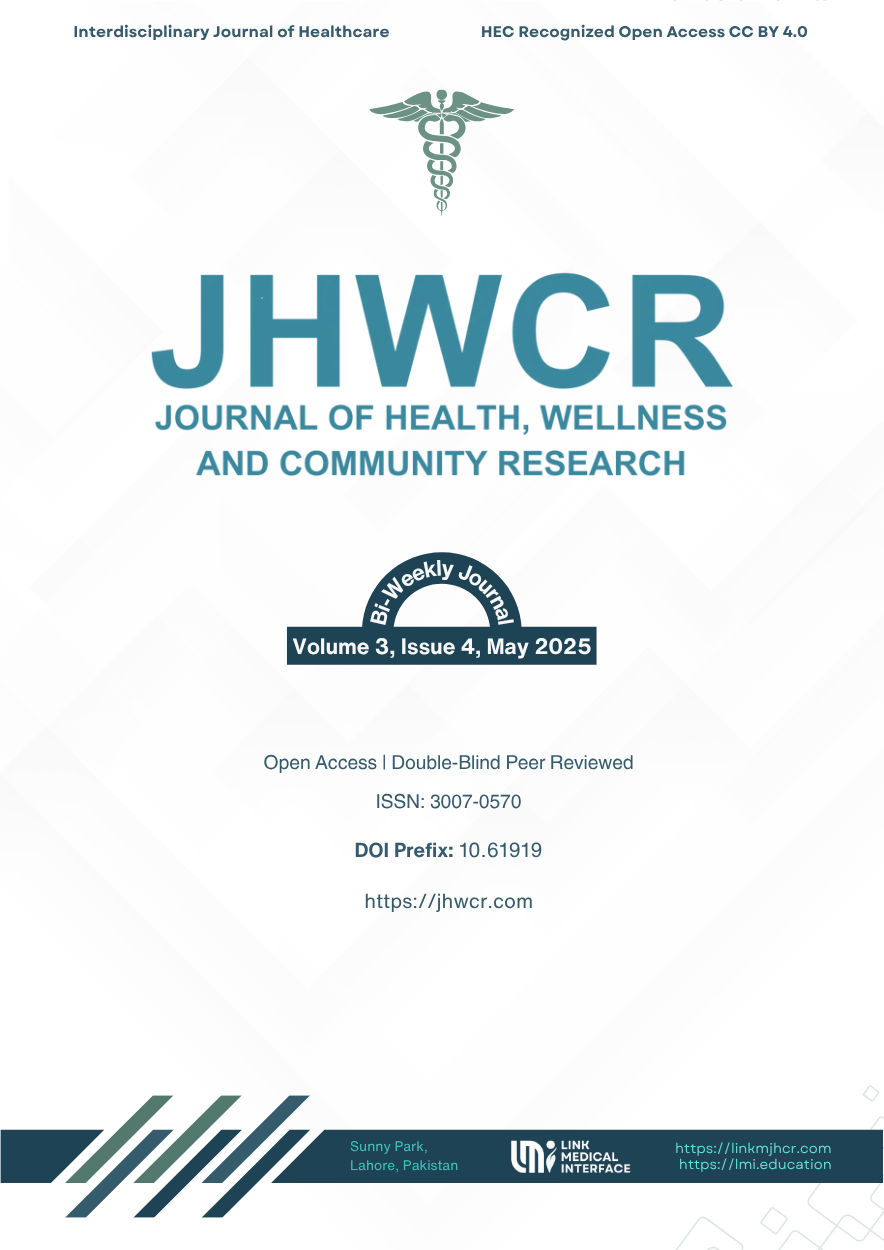Comparative Effects of Inspiratory Muscle Training vs Expiratory Muscle Training Along with Aerobic Interval Training on Functional Performance and Fatigue Level in COPD Patients
DOI:
https://doi.org/10.61919/zy8c8a53Keywords:
Chronic Obstructive Pulmonary Disease, Respiratory Muscle Training, Aerobic Exercise, Dyspnea, Fatigue, Pulmonary Rehabilitation, Functional Performance.Abstract
Background: Chronic Obstructive Pulmonary Disease (COPD) significantly impairs respiratory function and quality of life, with growing emphasis on non-pharmacological interventions such as pulmonary rehabilitation. However, limited evidence directly compares the differential impact of inspiratory versus expiratory muscle training, particularly when combined with aerobic interval training, on functional performance and fatigue in COPD patients. Objective: To compare the effects of Inspiratory Muscle Training (IMT) versus Expiratory Muscle Training (EMT), each combined with Aerobic Interval Training (AIT), on functional performance and fatigue severity in patients with moderate-stage COPD. Methods: A randomized controlled trial was conducted at Al-Zahra Rehabilitation Center, Lahore, including 53 patients aged 30–55 years with GOLD stage II–III COPD. Participants were randomly assigned to IMT+AIT (n=27) or EMT+AIT (n=26). Outcome measures included the Karnofsky Performance Scale (KPS), Fatigue Severity Scale (FSS), Modified Medical Research Council (mMRC) Dyspnea Scale, 6-Minute Walk Test (6MWT), and Forced Expiratory Volume in 1 second (FEV1), assessed pre- and post-intervention. Ethical approval was obtained and procedures adhered to the Declaration of Helsinki. Statistical analysis was performed using SPSS v25, applying t-tests and non-parametric tests where appropriate (p<0.05). Results: EMT+AIT significantly outperformed IMT+AIT in improving KPS (p<0.001), reducing FSS (p=0.011), decreasing mMRC scores (p=0.018), enhancing 6MWT distance (p=0.005), and increasing FEV1 (p=0.022), indicating superior clinical efficiency. Conclusion: EMT combined with AIT is more effective than IMT+AIT in enhancing functional capacity, reducing fatigue and dyspnea, and improving pulmonary function in COPD patients, supporting its integration into targeted rehabilitation programs.
Downloads
Published
Issue
Section
License
Copyright (c) 2025 Muhammad Ashir Rehman Malik, Subayyal Iftikhar, Shahid Sarwar, Maheera Khalid, Komal Munir, Umrah Khan (Author)

This work is licensed under a Creative Commons Attribution 4.0 International License.


